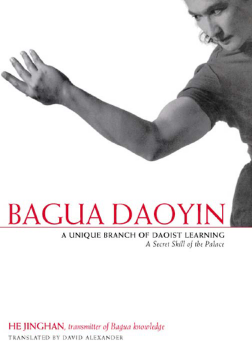
Additional Information
Book Details
Abstract
The beautiful, complex movements of Bagua require a lifetime to master fully, but can be practised with significant physical and mental health benefit at any level. In this highly illustrated guide, Master He, a fifth generation practitioner, introduces the ancient Daoist principles on which Bagua is based, its place within the Chinese martial arts, and the approach to life it nurtures. Many pages of photographs illustrate a programme of sequences, showing the beauty of the movements, and the positions and transitions the practitioner is aiming for.
Bagua Daoyin supports and trains the body and the mind to promote balance and harmony. The external movements are echoed in the internal body, which promotes the flow of energy that leads to greatly improved health, a tranquil and focused mind, and increased longevity. Practitioners quickly report reduced stress levels and increased enjoyment of life.
This fully illustrated introduction to Bagua Daoyin will be essential reading for Bagua, Xingyi and Taiji practitioners at all levels, dancers, and indeed anyone interested in improving their physical and mental wellbeing.
I would recommend anyone interested in martial arts in general to take a look at the very interesting perspective that the author expresses on his art in this book.
East-West Taoist Association Newsletter
He Jinghan is a fifth generation practitioner of the Bagua Quan lineage. At the age of 15, he started studying Yang style Taiji Quan and at the age of 23 was introduced to Master Gong BaoZhai and began to specialize in Bagua. He was a disciple of Master Gong for 23 years, until his teacher's death. He Jinghan now focuses on the cultivation of the arts and the promotion of Bagua Daoyin.
Table of Contents
| Section Title | Page | Action | Price |
|---|---|---|---|
| Part 1 | |||
| 1. Why public water supply can’t fill all the gaps | |||
| 2. Introducing self-supply | |||
| 3. The scale of rural self-supply | |||
| 4. The scale of urban and peri-urban self-supply | |||
| 5. Ownership and investment in self-supply in sub-Saharan Africa | |||
| 6. Early stage self-supply technologies | |||
| 7. Self-supply and well water quality | |||
| 8. Community and self-financed supplies: complementary services in sustainability | |||
| 9. Supporting self-supply acceleration | |||
| 10. Conclusions and recommendations | |||
| Part 2: Self-supply case studies | |||
| 1. The role of self-supply in Scotland | |||
| 2. Self-supply in the Danube region | |||
| 3. The shining example of domestic rainwater harvesting in Thailand | |||
| 4. The National Upgraded Well Programme, Zimbabwe | |||
| 5. Introducing alternative and affordable technologies for rural water supply in Tanzania | |||
| 6. The pitfalls and positives of introducing support to self-supply in Zambia |
